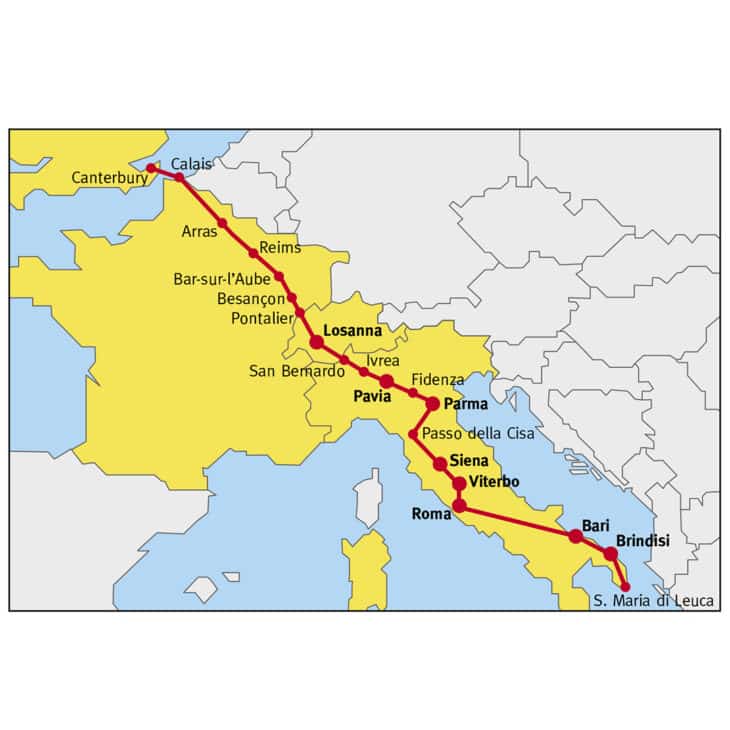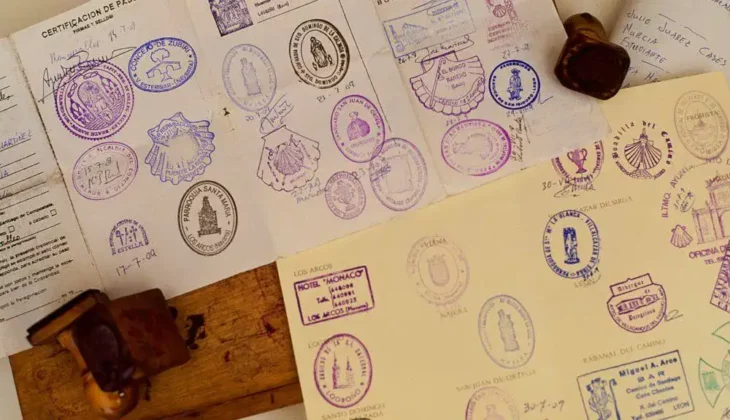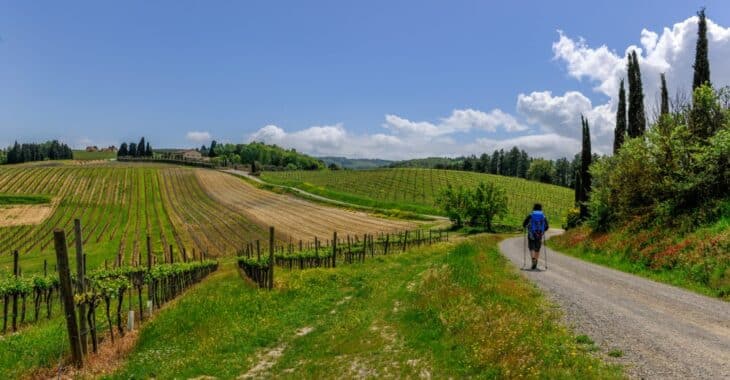Walking the Via Francigena: The Roman Way to Rome
The Via Francigena, often referred to as the Roman Way, is one of Europe’s oldest and most fascinating pilgrimage routes. Stretching across countries and cultures, it has been walked by countless pilgrims for more than a thousand years. Today, the Via Francigena offers modern travelers the chance to retrace medieval footsteps while discovering Italy’s landscapes, history, and traditions.
Although the Camino de Santiago in Spain has become world famous, the Via Francigena is its quieter Italian counterpart. Instead of ending at the tomb of St. James in Santiago de Compostela, the Roman Way leads pilgrims south to St. Peter’s Basilica in the Vatican, the heart of Rome. Both journeys share the essence of pilgrimage: a mix of physical challenge, spiritual reflection, and cultural discovery.
Unlike the Camino, the Via Francigena has not been commercialized to the same extent. This makes the path especially attractive to walkers looking for authenticity and solitude. You may walk entire stretches through vineyards, olive groves, and medieval villages without seeing another pilgrim. At the same time, the infrastructure has improved dramatically in recent years, with signposts, apps, and accommodations designed specifically for pilgrims.
Walking the Via Francigena is not just about reaching Rome. It is about discovering Italy at a slower pace, one step at a time. It is about meeting locals, tasting regional food, and finding meaning in the rhythm of walking. For some, it is a religious journey; for others, it is simply a unique way to experience Europe’s cultural and natural heritage.
How to Start Your Journey
While the original route begins in Canterbury, England, most modern walkers start in Italy.
-
Great St. Bernard Pass (Aosta Valley): the traditional entry point into Italy.
-
Lucca or Siena: the most popular starting points for those who want a 10–14 day walk.
-
Viterbo: a short option (about 100 km), just enough to receive the official certificate in Rome.
Best airports for Via Francigena pilgrims:
-
Milan Malpensa (MXP), Turin (TRN), Geneva (GVA): for starting in the north.
-
Pisa (PSA), Florence (FLR): for central Italy (Lucca, Siena).
-
Rome Fiumicino (FCO), Rome Ciampino (CIA): for departure at the end of the walk.
History of the Via Francigena
The origins of the Via Francigena go back to the Middle Ages. The name itself means “the road through France,” reflecting the fact that many travelers and pilgrims crossed the Alps from France or Switzerland into Italy.
The best historical record of the route comes from Sigeric, Archbishop of Canterbury, who in the year 990 traveled to Rome to receive his papal title. On his way back to England, he carefully documented 79 stages of the journey from Rome to Canterbury. This itinerary is the basis of what we now call the Via Francigena.
In medieval times, the Via Francigena was one of the three great Christian pilgrimage routes, together with the Camino de Santiago to the tomb of St. James in Spain and the pilgrimage to Jerusalem. Pilgrims from across Europe used the Via Francigena to reach Rome, where they visited the tombs of the apostles Peter and Paul.
The route also served as a major artery for merchants, armies, and cultural exchange. Villages and monasteries thrived by offering food and shelter to travelers. Roads were built and maintained to support the constant flow of people. Even today, much of the route follows ancient Roman roads like the Via Cassia and passes through towns that grew wealthy from medieval pilgrimage.
Over time, however, the route fell into obscurity as other forms of travel became more popular. It was only in the late 20th century that historians and associations began to revive the Via Francigena as a cultural itinerary. Today, it is recognized by the Council of Europe as a European Cultural Route and continues to attract thousands of walkers from around the world.
Where Pilgrims Stay
Walking the Roman Way pilgrimage route is not only about the journey but also about the hospitality. Accommodation is varied and often affordable:
-
Pilgrim hostels (Ostelli dei Pellegrini): simple, friendly, €10–20 per night.
-
Monasteries and convents: quiet, spiritual stays, sometimes donation-based.
-
Agriturismo and B&Bs: cozy countryside homes, usually €40–70 per night.
-
Hotels: available in larger towns like Lucca, Siena, Viterbo, and Rome.
To stay in pilgrim hostels, you’ll need the Credenziale del Pellegrino (pilgrim passport).
Highlights of the Rout
The Italian section of the Via Francigena is about 1,000 km, but many choose the final Siena to Rome stretch (~250 km, 10–14 days).
-
Siena – San Quirico d’Orcia: classic Tuscan hills and vineyards.
-
San Quirico – Radicofani: medieval landscapes.
-
Radicofani – Bolsena: volcanic lakes and villages.
-
Bolsena – Viterbo: Etruscan history and thermal springs.
-
Viterbo – Sutri: Lazio countryside charm.
-
Sutri – Rome: the final approach along the ancient Via Cassia.
Arriving in St. Peter’s Square, after days or weeks on foot, is an unforgettable moment.
Pilgrim Passport & Certificate

-
The Credenziale (pilgrim passport) allows you to collect stamps at churches, hostels, and town halls.
-
Walk at least 100 km and you can receive the official Testimonium certificate at the Vatican.
Why Walk the Roman Way?
-
A quieter alternative to the busy Camino de Santiago.
-
Stunning landscapes: Alps, Tuscany, Lazio, and finally Rome.
-
A journey through history — medieval towns, Roman roads, ancient churches.
-
A mix of spirituality, culture, and slow travel.
Practical Tips
-
Best months: April–June or September–October (pleasant weather, fewer crowds).
-
Budget: €30–60 per day, depending on where you sleep and eat.
-
Essentials: good walking shoes, lightweight backpack, rain gear, and a power bank for GPS.
Final Word
The Via Francigena pilgrimage to Rome is more than a hike — it’s a cultural and spiritual journey across Italy. Whether you start in Aosta, Lucca, or Siena, every step brings you closer to the Eternal City.
For many, walking the Roman Way is Italy’s answer to the Camino de Santiago: a path of landscapes, traditions, and personal discovery.
A 10-Day Italian Luxury Itinerary: From Rome to Milan
First Time in Italy: What to Do and Where to Start


